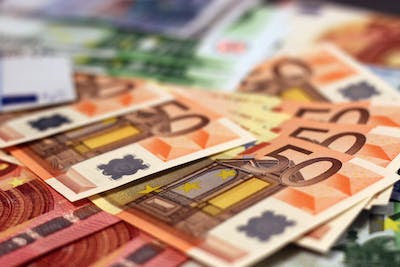Understanding the Current Status of Pakistan Economy
Pakistan is a country with a population of over 220 million people, located in South Asia. The economy of Pakistan has been on a rollercoaster ride in recent years, facing several challenges and crises. The country has been struggling to revive its economy and put it back on track. In this article, we will explore the current status of the Pakistan economy.
Overview of the Pakistan economy
Pakistan's economy is classified as a developing economy, with a gross domestic product (GDP) of $271 billion in 2021. The country's economy is heavily dependent on agriculture, which accounts for 23% of the GDP and employs 38% of the workforce. The services sector is the largest contributor to the GDP, accounting for 58% of the total, followed by industry at 19%.
Pakistan is a member of the World Trade Organization (WTO) and has been taking steps to liberalize its economy, including reducing tariffs and improving the business environment. However, the country still faces several challenges that have hindered its economic growth.
Challenges facing the Pakistan economy
One of the significant challenges facing the Pakistan economy is its high level of public debt, which has risen sharply in recent years. According to the International Monetary Fund (IMF), Pakistan's public debt-to-GDP ratio stood at 98% in 2021, which is one of the highest in the world. The high level of debt has led to significant budget deficits, which have in turn led to inflation and currency devaluation.
Another challenge facing the Pakistan economy is its low level of foreign direct investment (FDI). Despite the government's efforts to attract foreign investment, FDI inflows have remained low, averaging around $2 billion per year. This is due to several factors, including political instability, security concerns, and a challenging business environment.
The energy crisis is also a significant challenge facing the Pakistan economy. The country has been facing a severe shortage of electricity and natural gas, which has hampered industrial production and led to frequent blackouts. The government has been taking steps to address this crisis, including building new power plants and investing in renewable energy.
The COVID-19 pandemic has also had a significant impact on the Pakistan economy. The country has seen a sharp decline in economic activity, with GDP growth slowing to 1.5% in 2020, compared to 3.3% in 2019. The pandemic has also led to an increase in poverty and unemployment, as well as a sharp rise in food prices.
Current state of the Pakistan economy
Despite these challenges, there are some signs of improvement in the Pakistan economy. In 2021, the country's GDP grew by 3.9%, driven by strong performance in the agriculture and services sectors. The government has also made progress in reducing the budget deficit, which fell to 7.4% of GDP in 2021, down from 8.1% in the previous year.
The Pakistan Stock Exchange (PSX) has also been performing well in recent years. The benchmark KSE-100 index has risen by over 40% since 2020, indicating investor confidence in the country's economic prospects.
The government has also taken steps to address some of the structural issues facing the Pakistan economy. In 2020, it launched a comprehensive reform program with the support of the IMF, aimed at reducing the budget deficit, improving the business environment, and attracting foreign investment. The program includes measures such as tax reforms, privatization, and improvements to the energy sector.
The government has also launched several initiatives to promote economic growth and job creation. For example, it has launched the "Kamyab Jawan" program, which provides loans to young entrepreneurs to start their businesses. It has also launched the "Ehsaas" program, which aims to provide financial support to low-income families and improve social safety nets.
In addition to these initiatives, the government has been investing in infrastructure projects, such as the China-Pakistan Economic Corridor (CPEC), which aims to improve transport and energy infrastructure in the country. The CPEC has the potential to transform the Pakistan economy, by improving connectivity and attracting foreign investment.
However, the Pakistan economy still faces several challenges. Inflation remains high, with consumer prices rising by 9.1% in 2021. The country's trade deficit also remains high, standing at $23 billion in the first nine months of the fiscal year 2021-2022.
The country's current account balance has also been a concern, with a deficit of $1.1 billion in the first half of the fiscal year 2021-2022. The government has been taking steps to address these issues, such as tightening monetary policy and introducing import restrictions. However, these measures have also led to a rise in unemployment and inflation.
Conclusion
In conclusion, the Pakistan economy has been facing several challenges in recent years, including high levels of public debt, low levels of foreign investment, and an energy crisis. The COVID-19 pandemic has also had a significant impact on the economy, leading to a decline in economic activity and an increase in poverty.
However, there are some signs of improvement in the Pakistan economy, with GDP growth picking up in 2021 and the government launching several initiatives to promote economic growth and job creation. The government's comprehensive reform program, with the support of the IMF, also holds promise for addressing some of the structural issues facing the economy.
To sustain the momentum, the government must continue to focus on reducing the budget deficit, improving the business environment, and attracting foreign investment. It also needs to address the energy crisis and take measures to reduce inflation and the trade deficit. If these challenges can be addressed, the Pakistan economy has the potential to realize its full potential and become a vibrant, dynamic economy in the region.

Comments
Post a Comment